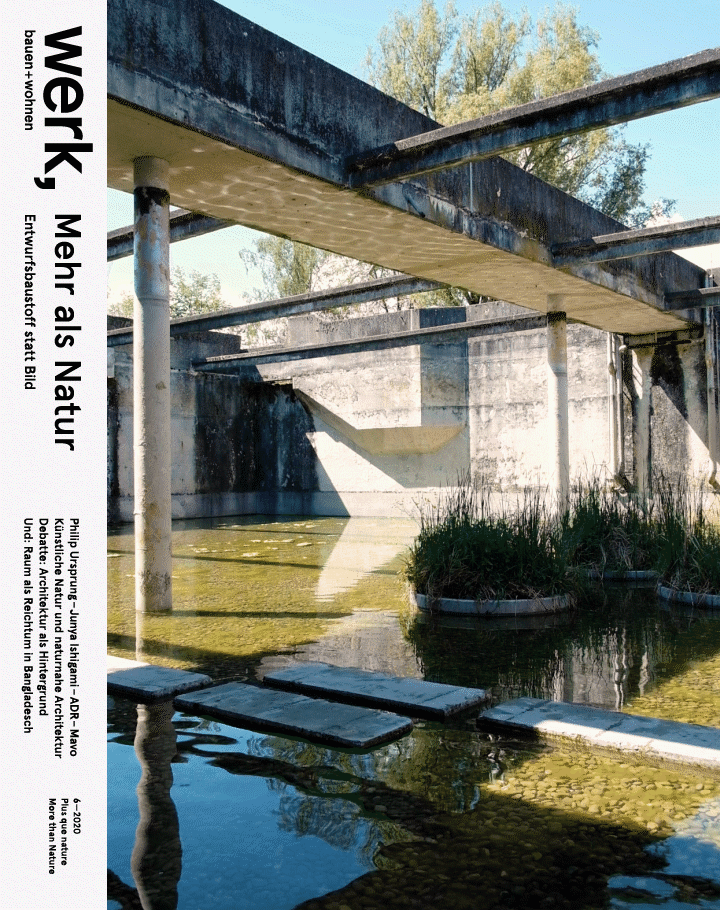werk, bauen + wohnen 6 – 2020

Nature?
Philosophers have recently asserted that “nature as such does not exist.” Certainly, this does not mean that the trees in front of the office window are only imagined or do not exist at all – but rather that the term “nature” is always shaped by human thought and action.
Nature only represents a constructed selection of what we humans call “cosmos” or “world”. The assertion quoted above has consequences for architecture. Suddenly there is no longer a contrast between a cultural achievement, which for the moment we can succinctly call architecture, and nature as a background. Architecture can no longer be placed in a dialec-tical relationship to nature. Seen in this way, nature is no more an object but, so to speak, an aura that surrounds and permeates everything. In his book Ecology without Nature philosopher Timothy Morton maintains that it is precisely the typical modern concept of a nature that dif-fers from us which, in fact, hinders a truly ecological way of thinking. He finds that the roots of this evil lie in our consciousness, which is still strongly influenced by Romanticism. Precisely this yearning for natural beauty has, he says, persuaded us that a change in our perception would also have consequences for our actions. But, given the current challenges as regards the climate, this promise fails to ma terialise. Truly ecological action is not based on an image of “nature” but on the various relationships between living beings, material, and space.
Therefore, at this point, a few suggestions that are reflected in the current issue: The boundaries of the architectural object could be as widely defined as those of an ecosystem – and the same could also apply to the planning process and to the use after handover. Perhaps architecture does, indeed, begin with the landscape – very much in the way that the Dutch have perfected for centuries. And landscape, too, is always man-made.
On that account in this issue we have com-piled examples that shift the usual boundaries between architecture and nature: “caves” by Junya Ishigami in Japan or by Ensamble Studio in Galicia. Establishing oneself in this intensified nature no longer takes place in the romantic sense conveyed by the term “splendid isolation” but by seeing it as a retreat or a lounge, created by human beings. — Tibor Joanelly, Roland Züger